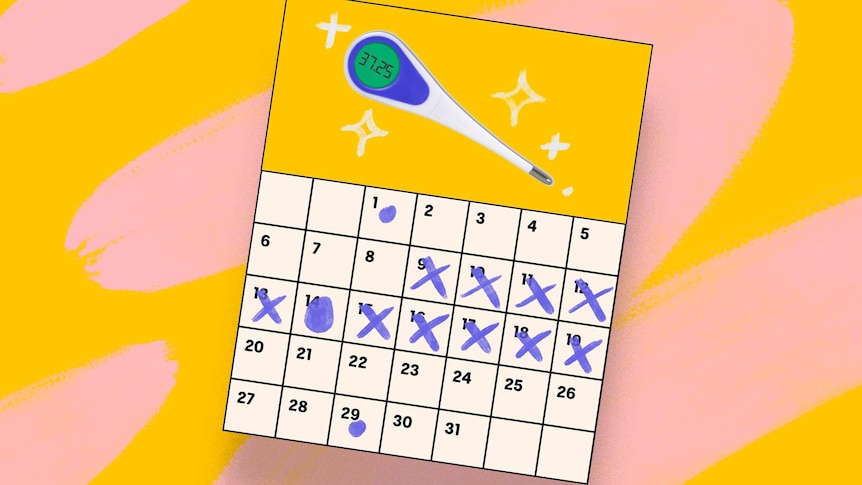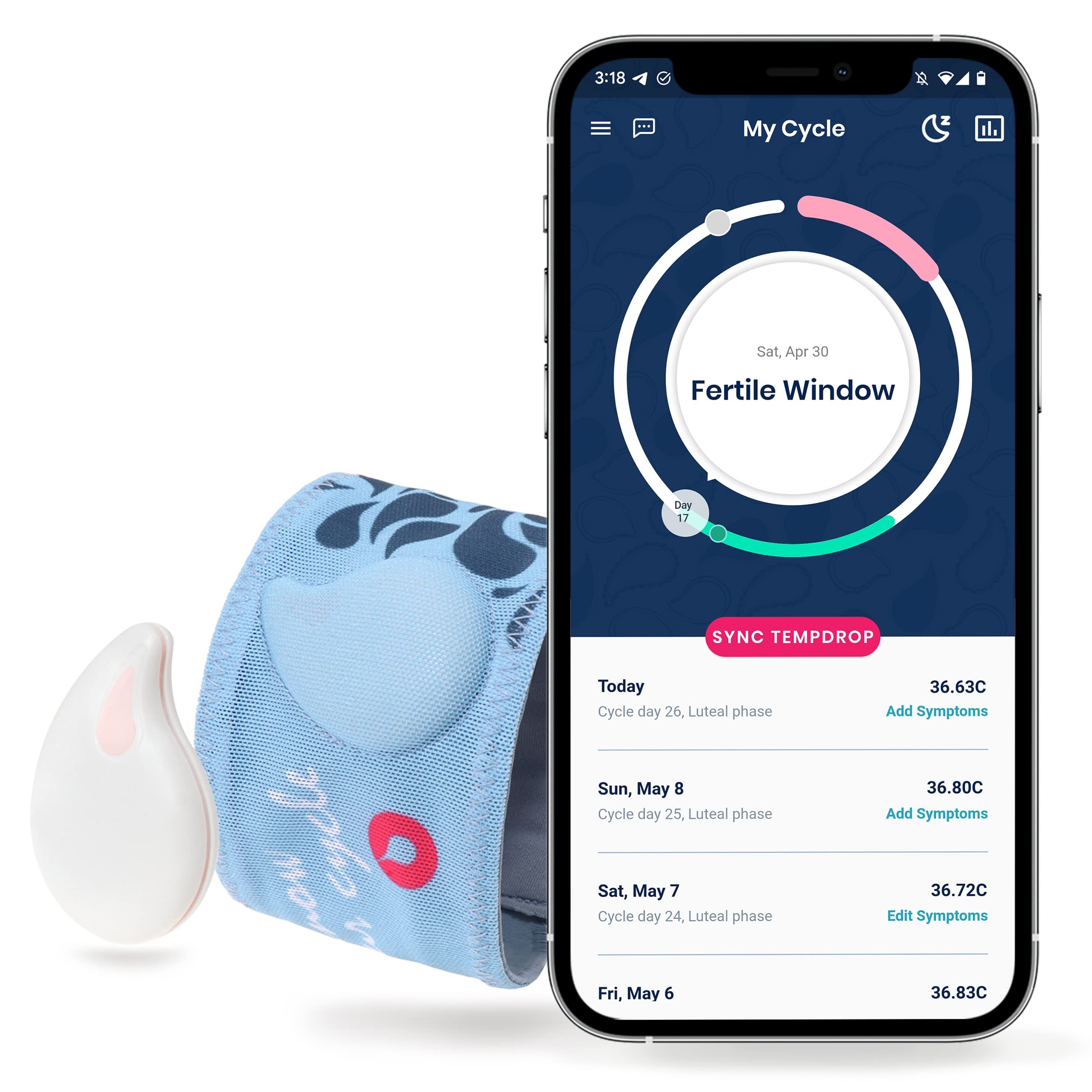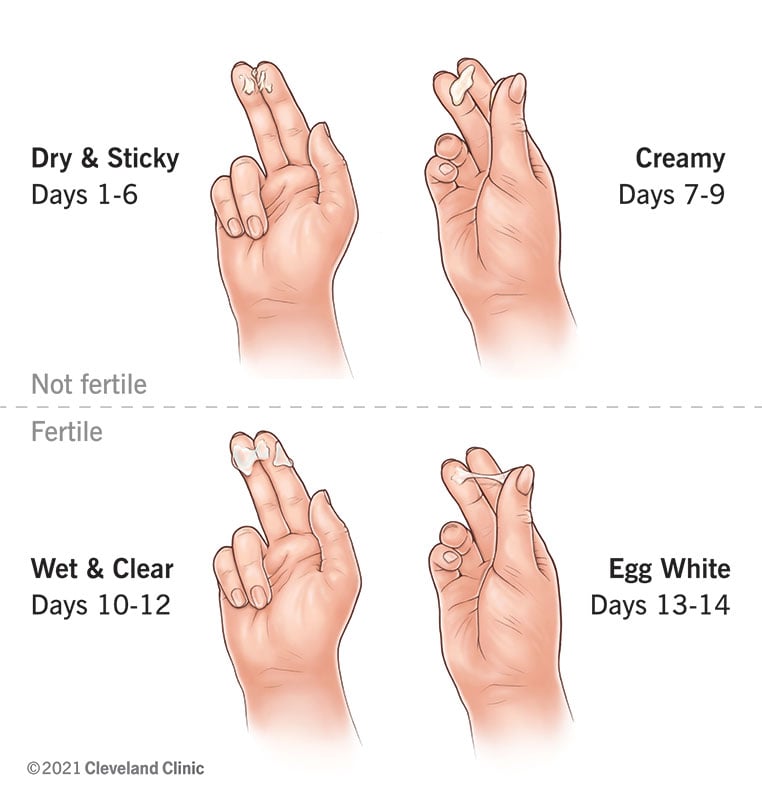Whether you’re looking for a non-hormonal birth control option OR trying to conceive, the fertility awareness method (FAM), is an amazing and effective technique to consider (up to 99.6% with perfect use). See the Frank Herman pub med study to back it up HERE. 👏 👏
The Sympto Thermal Method (symptoms + temperature), requires you to track your menstrual cycle, basal body temperature and cervical fluid/mucus to determine fertile and non fertile days 👇 Keep in mind, there are many different methods of fertility awareness, but this is the most accurate!
NOTE: using the fertility awareness method as a form of birth control is user dependent and requires consistency and diligence, otherwise your risks for pregnancy increase! If you are less likely to be consistent with this method, we encourage using non toxic condoms or other barrier methods when having sex (note: always avoid oil based lubricant with condoms to avoid breakage), and/or considering the non hormonal Copper IUD (ParaGard).

HOW IT WORKS:
STEP 1: Track your cycle length in an app like My Flo, Natural Cycles and/or Temp Drop -OR- using a paper calendar/chart. It can be helpful to use more than one app and/or tracking mechanism to remind yourself to consistently input data and reduce inconsistencies. A normal cycle length is anywhere between about 24-35 days and anything outside of that may be an indicator of a hormonal imbalance that should be investigated further (take our symptom imbalance quiz HERE).
- HOW To calculate your typical cycle length:
- The first day of your period (a true bleed, NOT spotting) is considered DAY 1 of your cycle, and the *day before* your next period is considered the last day of your cycle. So to determine your most recent cycle length you'll want to go back 2 periods and count from: day 1 of the start of that period up to the *day before* the next period started (EX: for most women this is 24 or more days long, although many women have shorter cycles).
- You can also take an average of the last 3 cycles (add the lengths together and divide by 3).
- NOTE: If your cycle lengths change by 4+ days each time (coming earlier or later than expected), you may have an "irregular" cycle
STEP 2: Take your basal body temperature (BBT) every AM, using an app or device to help you track your BBT with ease (see below for a breakdown of the two apps/devices we prefer!). BBT is lower in the first half of the cycle and raises by about .5-1 degree AFTER ovulation, which is when an egg is released from your ovary, in search of sperm (ovulation must happen to be able to get pregnant). This is your most "fertile" time of month. BBT will remain elevated throughout the rest of your cycle and drops when you get your period (or it will stay elevated if you become pregnant!).
PSA: BBT doesn't tell you when ovulation is coming, only that it has already occurred, so it’s important to also track your cervical fluid changes throughout the month (more on that below).
Our preferred BBT / cycle tracking devices include:
✔️ Natural Cycles: a thermometer and app that helps keep track of your data (use code YHB2020 for a discount on your annual subscription). It's important to track your temperature consistently to get the most amount of data so that the app can build an accurate algorithm, especially because BBT can be sensitive to disruptions like travel, getting up to pee in the night (especially within 1-2 hours of waking), illness, alcohol consumption and poor sleep- which will give an inaccurate temperature reading.
Once the algorithm has enough data from your entries, you will receive a “green day” which means that you are NOT fertile or a “red day” which means that you ARE in your fertile window and will want to abstain from sex or use a barrier method (like non toxic condoms) if not trying to conceive. NOTE: natural cycles now has a collaboration with Oura Ring, which allows the app to track body temperature throughout the month to detect ovulation, without using the thermometer that's required with the standard (non oura ring) app.
✔️ Temp Drop: a wearable armband and sensor that tracks your core temperature continuously throughout the night and allows you to sync your data to the app when you wake up (use code AFYOURHORMONEBALANCE for a 10% discount). You can track your symptoms to verify ovulation, learn about your cycle phases and tune into your monthly patterns. Tempdrop’s algorithm learns your unique nightly and monthly temperature patterns, filtering out disturbances for accurate results which is a MAJOR bonus that Natural Cycles doesn’t offer.
If you are a new mom or someone who gets up multiple times throughout the night, travels frequently, etc, this would be the most accurate way to get your temperature readings.

✔️ Pro Tip: if you decide to use your own BBT thermometer (outside of these apps), you will need a basal body thermometer which has at least 1 decimal point. Because temperature can change based on the factors mentioned above, it’s VERY important to get at least three to four days of confirmed higher temperatures before confirming ovulation (along with cervical fluid changes).
STEP 3: Cervical mucus / fluid is produced in the cervix and changes over the course of the month. You will need to check this daily one of three ways:
1) insert a clean finger into the vagina and reach toward your cervix, then examine the mucus/fluid on your finger
2) wipe with toilet paper before going to pee and notice any discharge on your underwear
3) look at the vaginal discharge in your underwear and observe/feel the consistency.
Cervical mucus/fluid becomes clear, stretchy and slippery as ovulation approaches (peek cervical fluid is like an egg yolk that you can stretch between two fingers). Learn more about the changes you can look for throughout each of the four phases of your cycle HERE and review the images below!

Note: estrogen increases cervical fluid/mucus so if someone has a LOT of cervical mucus, it could be due to high estrogen, and if someone has very little, it may indicate low estrogen. And after coming off hormonal birth control it can take 6-8 months to get a more abundant cervical fluid back. We highly suggest testing your hormones in saliva to get a baseline of where your hormone levels lie and take steps to rebalance naturally, supporting optimal fertility and healthy, regular periods. (View our build-your-own testing and rebalancing package options to get started!)
STEP 4 (BONUS): Tracking cervical positioning is another (optional) bio-marker! If interested in this extra measure, get a step-by-step guide HERE.
NEXT STEPS / SUGGESTIONS:
If you're trying FAM for the first time, it can be helpful to work with a fertility awareness educator and/or be sure to use a barrier method (like non toxic condoms) for 3 months while you're getting used to this method.
REMINDER: the FAM method is user-dependent for accuracy. Unlike the IUD (which is inserted), or the oral pill (which you pop daily and don’t have to think much about), this is reliant upon YOU being consistent with tracking and inputting your data...but that’s also what makes it empowering! The more you get to know your own body and its fertile signs, the more you'll know how to nourish it! 👌
Want to learn more about FAM? Listen to THIS episode on the Fitnessista podcast with our founder Candace Burch and Health Coach, Jess Suchan (@bodyblissbyjess) who helps break down the method in a really digestible way!
OTHER RESOURCES:
Taking Charge of Your Fertility by Toni Weschler
Fertility Friday Podcast
Healing Hormones Podcast
Solo 2.0 Podcast Fertility Episode
